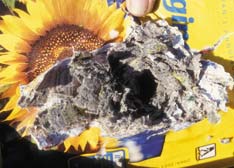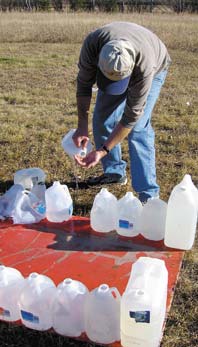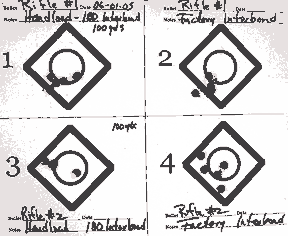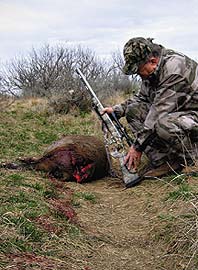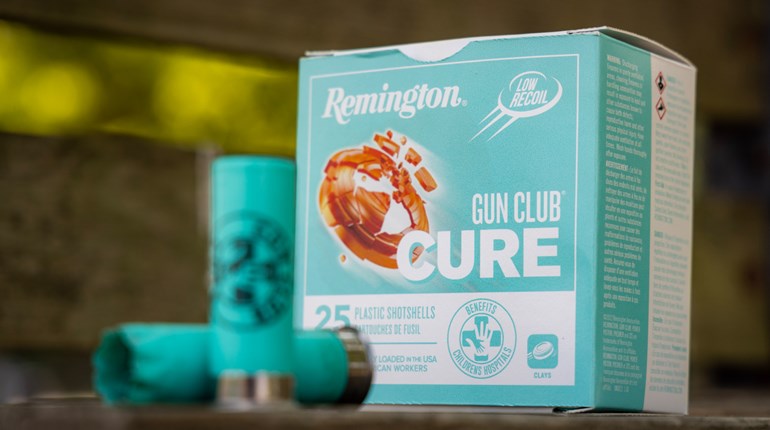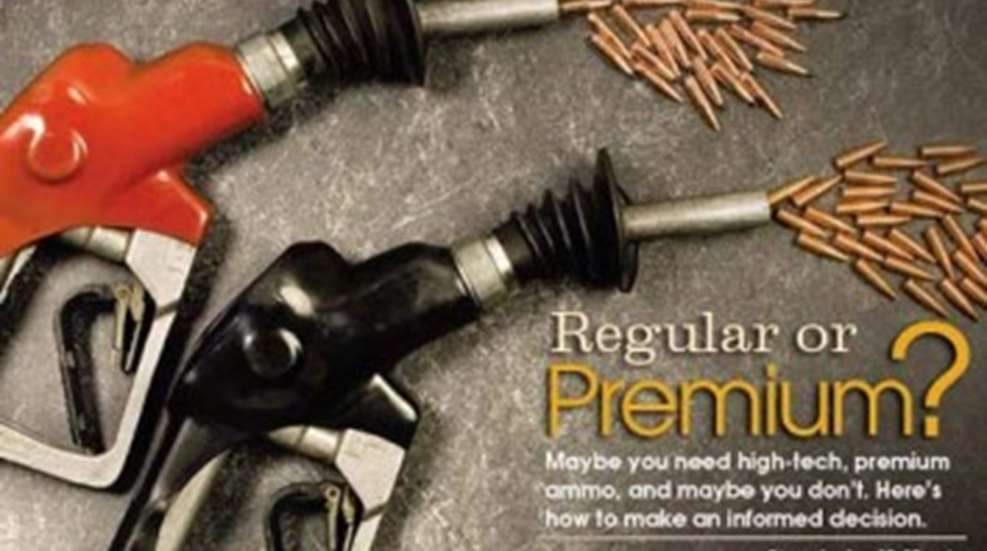
Automakers clearly indicate if your engine requires premium fuel, but you are on your own when deciding whether or not to buy premium ammo or bullets. Premium ammo usually comes down to premium bullets, so let's concentrate on projectiles.
What constitutes a premium bullet? Price is one factor. Most premium bullets are about twice as expensive as standard bullets. Premium bullets are expensive because they are more complex and not manufactured in high volume. Their value is they are special-purpose bullets designed for maximum penetration and weight retention.
So when do we require premium bullets? I see their best use to be on large animals where maximum penetration and energy are needed. North American critters such as elk, moose, buffalo and the big bears require tough bullets. So do some of the exotics, particularly nilgai and large hogs. There are also premiums that open fast enough for lighter game.
Conversely, when are premium bullets not required? I would suggest most premium bullets are not necessary for deer-size critters. In fact, they might not perform as well as faster-opening bullets on thin-skinned, light animals. This may seem controversial, but deer are not very wide critters. What's needed are bullets that disrupt and start dumping their energy within a few inches of impact rather than penetrating 10 or 12 inches before achieving their maximum expansion.
Premium bullets handle high impact velocities better than non-premium bullets. This makes them better candidates for close-range shooting of large animals and in high-performance cartridges launching their projectiles at extreme speed. High impact velocities tend to tear bullets apart, resulting in core and jacket separation and poor penetration. Bonded-core and homogenous bullets resist this tendency, penetrating deeper and in a straighter line.
I consider four groups of factors when assessing premium bullets: physical dimensions, weight and uniformity; accuracy; performance in test mediums; and performance on game animals.
Let's look at how uniform the bullets are in the box you have just purchased. Some of this information is easy to obtain by weighing several bullets and comparing overall length and width with a caliper or micrometer. Unfortunately, we cannot assess key factors such as jacket thickness and uniformity and core hardness without special equipment. In most cases manufacturers maintain very tight standards with amazing continuity. I find weighing and segregating bullets results in more consistent accuracy.
Accuracy is very difficult to quantify. What is good enough for one shooter might be unacceptable for another. Let's say acceptable accuracy is maintaining the average accuracy of the rifle. Hopefully that is about one minute of angle or 1 inch for three or five shots at 100 yards. I still shoot five-shot groups but drop to three-shot groups when assessing large magnum calibers. It's rare to shoot more than one or two shots in the field with the big boomers so why shoot five shots from the bench?
Evaluating a bullet's penetration and mushrooming capabilities can be done by shooting it into test mediums and comparing the results against different bullets. Most hunters do not bother to do this since it is somewhat difficult to set up and obtain meaningful results. Stopping and finding bullets can be a real challenge.
It is necessary to use a simple medium that provides consistent results, is easy to handle and dispose of, and enables easy recovery of fired bullets. The simplest method I have found is to line up several plastic milk jugs filled with water. Usually five or six milk jugs are required since the bullet will likely stop in the fourth or fifth. A somewhat more technical method is to use bundles of wet telephone books, which usually stop bullets after about 6 or 7 inches of penetration. The bullets are very easy to find. I measure the maximum width of the mushroom, overall length and weight of the recovered bullet.
The most important consideration regarding premium bullet selection is its performance on game. This is not an easy determination since few hunters shoot enough game to amass a significant sample. I make a practice of examining terminal performance whenever possible. First I assess the entrance and exit wounds (if the bullet exited). Then I spend a few minutes looking at the organs for tissue damage, as the animal carcass is dressed. Inspect the inside of the body cavity to determine if bone was hit and how much damage occurred. Finally, when the hide is removed, look at the offside to see what damage occurred under the hide.
Some bullets do incredible damage en-route to their exit but leave only a small hole in the offside hide. It's possible to conclude the bullet failed to open up when, in fact, the mushrooming took place, but much of the distorted front end of the bullet shears off from the shank as it traverses the animal's body. This often happens with the Nosler Partition, one of the best bullets on the market.
To understand what the current crop of bullets is capable of, for the last two years I have been shooting and hunting with nearly every premium bullet. I have fired more than 2,000 bullets at the range, into various test mediums and during hunts ranging from the Arctic to the Rio Grande. My hunting partners and I have examined more than 75 kills during this period.
Obtaining a statistically meaningful sample is virtually impossible. I have rarely had the opportunity to make identical killing shots on critters 10 times in succession. However, from this testing I have divided premium bullets into retained-weight categories. Although frontal diameter is key to penetration, retained weight is also crucial for terminal performance. Retained weight is a quantitative index, which is much easier to determine than frontal diameter or total length of recovered bullets.
Let's examine the premium bullets according to my retained-weight criteria. First are the 90-percent-plus bullets. This includes the various Barnes bullets, Winchester Fail Safe, Swift A-Frame, Remington Premier Core-Lokt Ultra Bonded, North Fork and Speer Trophy Bonded Bear Claw. These are tough bullets that use bonding or homogenous construction. Most of these bullets are semi-pointed, so they are not intended for long-range shooting. In fact, their tough jackets and cores do not function well at reduced velocities. Two exceptions to this are Barnes' bullets, particularly the Triple-Shock, and Winchester's Fail Safe. I have used both on caribou and mule deer at ranges in excess of 500 yards with excellent results.
Barnes Bullets manufactures three variations of its famous solid-copper X-Bullet. In recent years the accuracy of Barnes bullets has improved so significantly they are now as accurate on paper as they are reliable on game. The three current offerings are the X-Bullet, XLC with a blue moly coating and Triple-Shock. Most of our kills with Barnes bullets do not result in large exit holes, but the internal damage is devastating. Bullets in the Barnes lineup are available from .224- up to .585-inch diameter for the mighty .577 Nitro.
North Fork Technologies makes unique-looking bullets that combine superb uniformity and accuracy with exceptional terminal performance. The North Fork is essentially a solid-copper bullet with a fairly large bonded core in the front section. North Forks have distinctive grooves in the main shank that reduce bore contact and fouling. I shot sub-1⁄2-inch groups at 100 yards with the 165-grain bullet using my .308 Winchester.
Remington manufactures a wonderful bullet called the Core-Lokt Ultra Bonded. This bullet is a sleeper. My accuracy testing has yielded many groups less than an inch in several .308 Winchester rifles. I have not shot game with this bullet but am confident it will perform very well. This is a heavy-jacketed, bonded design. The Core-Lokt Ultra Bonded is available from .243 caliber to .338 but only in factory-loaded ammo.
Speer's Trophy Bonded Bear Claw is one of the most reliable bullets on the market. It's a simple design—a bonded front core and a solid-copper rear section. Available in .224 to .458, the Trophy Bonded Bear Claw is offered in an extensive range of bullet weights.
Swift's A-Frame combines a heavy mid-section belt with front and rear lead cores. The front core is bonded to the jacket, ensuring maximum retained weight. A-Frame bullets have a distinctive flat frontal surface on their mushrooms. They are available in a wide range of weights from .25 to .470 caliber.
Winchester Fail Safe bullets have a reputation for thorough penetration. This is because the bullet does not disrupt into a large frontal diameter mushroom. The Fail Safe design is the exact opposite of the North Fork. The lead core is encased in a steel cup in the base of the bullet, while the front end is solid copper with a hollow point. Fail Safes are manufactured in .270 to .375 calibers.
I recently tested the newest offering from Winchester. The XP3 is basically a Fail Safe with a polymer tip and minus the internal steel cup. Winchester's engineers did much more, but I like to keep things simple. The XP3 shot around 1 inch in my .300 Winchester Magnum and WSM rifles. Retained weight is very consistent in the mid-90-percent range. Recovered bullets show a mid-section bulge that Winchester touts as causing a two-stage shocking process. I have not yet used the bullet on game but hope to soon.
I am aware of other 90-percent bullets, including the Woodleigh Weldcore and Norma offerings. I have not had opportunities to shoot them and evaluate their performance, however.
The next retained-weight category is the most popular. I call it 80-percent bullets. Is there much difference between 80 percent and 90 percent? My answer is yes, since 80-percent bullets open quicker and are more versatile. They kill deer-sized animals very well, yet hold together on larger animals such as elk or moose. These bullets are mostly polymer-tipped boattail designs with bonded cores. They are very accurate bullets with high ballistic coefficients. My hunting partners and I have used them at long range with deadly efficiency on dozens of animals.
Hornady InterBonds are some of the most accurate, reliable bullets on the market. InterBonds shoot superbly in every caliber and bullet weight I have tested. They kill cleanly at close and long range and are available from .270 to .458 caliber in an assortment of bullet weights.
Swift Bullets started the bonded, plastic-tipped boattail craze in 1999 with its excellent Scirocco. Now called the Scirocco II, these black, polymer-tipped bullets are superbly accurate and completely reliable on game. Scirocco IIs are available from .224 to .338 caliber.
Winchester's Partition Gold bullets fit into my 80-percent category. These bullets have been very reliable on deer although target accuracy varies significantly in my rifles. Partition Gold bullets are available in factory loads and as components on Nosler's website.
My final category is the 60-percent-plus. These bullets are tough and reliable but not intended to retain a high percentage of their original weight. A perfect example is the Nosler AccuBond. Nosler feels 65-percent to 70-percent retained weight is ideal for killing game, so it designs the AccuBond to meet that goal. Both the AccuBond and Partition retain those numbers, yet they perform somewhat differently on game. The AccuBond forms a mushroom very quickly and continues through the animal. The Partition's front mushroom initiates quickly and frequently shears away during disruption. The mushroomed jacket and bottom core then plow through the critter. This provides the best of both worlds—fast energy release for shock and good retained mass for penetration.
While not a trule bonded core, the Grand Slam uses Speer's Hot-Cor technology and specially tapered jackets with internal crimping cannelures. I have shot a lot of Grand Slams with varied success. Some recovered bullets had separated cores, while others mushroomed nicely. Accuracy varies also, from mediocre to consistent minute-of-angle. Grand Slams are available from .24 up to .375 caliber.
These categories and results are not cast in stone. I have had some of the 90-percent bullets slip into the 80s and some 80-percenters drop down to the 60s. Conversely, some bullets retain higher weight than anticipated. This simply indicates the range of performance that occurs given the many variables involved. Unfortunately, many individuals base their assessment of bullet performance on a sample of just one.
In my opinion bullet failure happens infrequently. I have seen surface blow-ups, core-jacket separation and failure to expand, but these problems are very rare today. Usually bullet failure is the result of poor bullet choice or bad shot placement. Hunters have never had it so good as far as bullet selection and performance is concerned.
Premium bullets can outperform standard bullets in certain situations. In other instances they are not necessary or are even a poor choice. The cost of a few premium bullets is insignificant relative to the cost of hunting nowadays.
Remember, however, shot placement is everything. Clean kills are assured when we use an appropriate bullet and drive it through the vitals.
